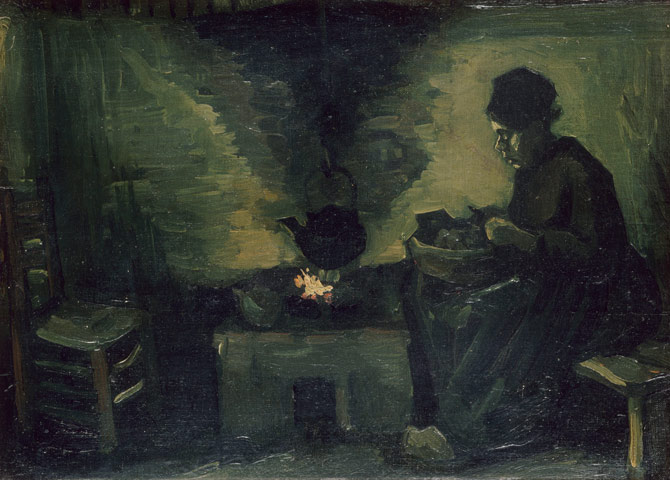Fr : version française / En: english version
mheu, Historical Museum of the Urban Environment
Peasant Woman By the Hearth
Vincent Van Gogh

1885
oil on canvas
40cm x 29cm
Paris, Musée d'Orsay
© RMN / Hervé Lewandowski
View this work in the exhibition Fire
The work
Influenced by Zola's naturalism and the body of work of the painter Millet, whom he admired, Van Gogh made a number of paintings of peasants. While staying at the family home from 1884 to 1885, he worked on the theme of potato eaters. Using neighboring families as his models, he painted in a dark palette of grays, blacks and browns, far removed from the brilliant colors he would use later. He paid special attention to the effects of shadow and light, thoroughly rendered in this study of a peasant hunched over the hearth.
The artist
Vincent Van Gogh owes his exceptional notoriety as much to his solitary, tormented life as to his work. Reared by a pastor father in a large family living in the Dutch countryside, he was bedeviled his entire life by a deep tension between his personal aspirations and the heavy burdens of bourgeois Calvinist society. Hired at age 16 to work at Goupil et Cie, an art dealer company in The Hague, London and Paris, he left to become a pastor. His interest at the time in society's humblest members and his Spartan lifestyle baffled religious authorities and his family, except for his brother Théo, an art dealer. With his brother's financial and emotional support, Vincent decided to devote himself to painting. After first producing paintings in dark colors depicting the life of ordinary people, he discovered pointillism, impressionism and Japanese prints in Paris's lively art scene. Van Gogh then left for Arles, where he painted pictures using fragmented splashes bursting with color, a precursor of Fauvism and expressionism. His difficult coexistence with Gauguin, who joined him there, led to an incident of self-mutilation in a fit of delirium. In 1890, he moved to Auvers-sur-Oise to live with a large colony of artists. Though he painted furiously there, he abruptly ended his own life in 1890.